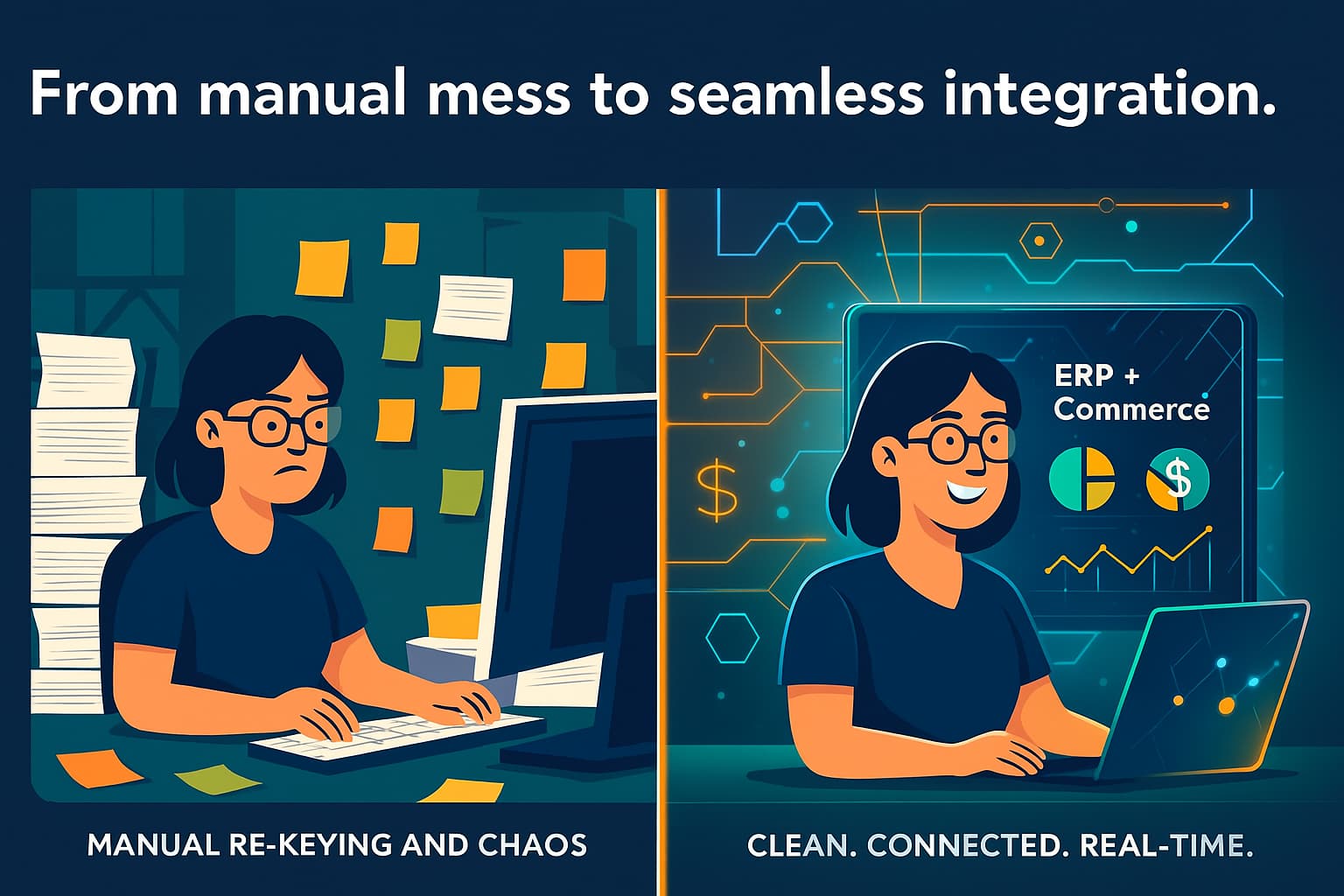
Your product catalog is the heart of your online business. It should be the authority on everything you sell. Any research should stop right there, on your site.
Your digital catalog is your chance to educate prospective buyers and remove all obstacles to the sale. A catalog with professional, captivating photos and robust, informative details performs the heavy lifting of converting browsers to buyers.
Here are our top 5 tips for maximizing the selling power of your online catalog.
1. Curate Experiences For Your Customer Segments
It’s up to you to decide what customer segments you want to create and target. Get started by collecting behavioral data on your users. Analyze your customers’ previous views, purchases, and searches, then group them together based on expected behaviors. For example, your behavioral segments may include high spenders, indecisive shoppers, and cart abandoners.
Once you have that done, personalize content specific to each group. Segmenting your customer base provides your customers a more personalized shopping experience and minimizes clutter. You can display content specific to each group, such as a shipping or return policy, to minimize any potential confusion over a particular customer’s terms and conditions.
Let’s say you create a segment of customers that includes everyone 25 years old and younger. In this situation, you could set automatic recommendations of age-relevant products to appear while browsing the catalog.
2. Incorporate Predictive Search For Better Browsing
Product catalogs can be large and hard to navigate but upgrading your website’s search capabilities will help direct your customers to a purchase. Features such as predictive auto-complete, trending suggestions, and precise search filters creates a more engaging search experience.
By caching a customer’s past searches, your search bar can auto-complete items that relate to their previous interests. You can leverage the search results page in various ways, such as displaying trending searches. Something as simple as adding a “Most Popular” sub-headline in the search results can pique curiosity about top-selling items. You can even let shoppers add products to the cart right from an autocomplete suggestion popup.
Organize information intuitively. Do you want dropdowns that reorder the results alphabetically? Do your customers respond best to results reordered by category? Have you considered displaying breadcrumbs for the search journey? They also boost SEO!
Depending on what eCommerce platform you operate on, adding these advanced search capabilities may require an upgrade or an extension. For merchants hosted on Magento 2 or BigCommerce, Kensium can help find the best possible extensions and solutions for their business.
3. Incorporate SEO To Boost Lead Generation
In a nutshell, Search Engine Optimization is the process of boosting web page rank higher on a search engine results page by including popular search terms related to your business or product. SEO holistically drives customers to your business via online platforms. In fact, search engine results drive 73% of global traffic to B2B companies. By optimizing SEO in your digital catalog, your products will appear in more searches and be made available to a wider audience.
“SEO is often overlooked by eCommerce companies in the sense that there isn’t always a strategy behind the metadata being created,” says Victoria Chuidian, our resident digital marketing expert. “It’s important to plan this content out so that users can organically find your site with greater accuracy, while also establishing your site’s credibility.”
Master the use of tags to improve your SEO. Product tags act as a rudimentary filter, helping your customers sort by style, color, or other attributes. You can even allow your customers to suggest new product tags. The keyword suggestions they produce can lead to insights about how your customers think. Long-tail keywords are better used in product SEO than short-tail keywords. You’ll most likely want to use short-tail keywords to direct customers to your main pages.
Well-written and engaging content does far more to sell a product than simply adding a bunch of keywords into the writing. Don’t add content just for the sake of “keyword-stuffing”.
4. Provide Relevant Cross-Sell Product Recommendations At Scale
Personalized product recommendations based on real-time shopping behavior create a more enjoyable shopping experience for your customers. Relevant suggestions usually come in three categories:
- Related Products: These are items that are in the same category as the products placed in the cart. For example, let’s say a buyer adds some dog toys to their cart. Amazon naturally suggests purchasing dog treats as well. While the treats aren’t an additional part of the toy purchase, they’re related because dog owners commonly buy treats along with toys.
- Complementary Products: These are items that work specifically with whatever products are in the user’s cart. Sometimes these complementary products are necessary for the original product to function. For example, if a customer adds a printer to their cart, Amazon will suggest that they purchase a pack of compatible ink to go with it.
- Services: Another way to cross-sell is to offer services that customers can add to their purchase. Service offerings are popular options for eCommerce stores that offer warranties and protection plans. Think of Best Buy suggesting a warranty to go with that new OLED TV, or IKEA suggesting furniture assembly services to go with that Smürsk dresser.
While you can set up cross-sell suggestions to appear at any point during the purchasing process, timing matters, so it’s important to be strategic about when you suggest other items to your customers. Cross-selling that is too frequent and annoying can cause customers to abandon their carts and can even negatively affect your store’s reputation.
If you’re unsure about when to implement cross-selling during the buying journey, we recommend the checkout page. Analytics firm Predictive Intent found that cross-sells on the checkout page can increase conversions by 3%.
5. Add Pre-Fill To Your Forms
Pre-filling forms makes a big difference to your customers. Studies show that up to 86% of users will leave a page instantly when they’re required to fill out a form. Part of the reason for such high abandonment is energy preservation; simply put, users don’t want to spend copious amounts of time filling out forms.
One study tested the effects of pre-fill on social media forms and found that conversions increased by 200% when businesses allowed forms to be autocompleted.
Pre-filling is especially helpful if you have frequent repeat customers that add the same SKUs to nearly every purchase. To facilitate ordering, build forms that you can pre-fill with your customer’s favorite SKUs and quantities.
Pre-populated form fields are useful because:
- They simplify the form submission process for contacts.
- They reduce errors.
- Contacts can see the information you have collected, such as their email address or phone number, and update any out-of-date information.
One of the primary concerns surrounding pre-fill is the need for security, so you will want to make sure any browser extensions are encrypted and that passwords are stored securely using appropriate password management software. But don’t forget that pre-fill has the potential to significantly increase conversions and help users follow through on registering for accounts, events, and more.
Wrap-Up
Careful planning of an eCommerce website is critical to its success, and your product catalog decisions are key to that. It needs to include everything that makes your products attractive to a prospective buyer.
Today’s retailers are in a competitive market that is increasingly defined by experience rather than price. To get in the game, you need integrated channels that offer customers the simple, streamlined user experience (UX) they’re looking for. Digital catalogs provide a seamless experience for your customers, but they can also deliver data and efficiencies that help you get the most out of your marketing channels.
Find out how you can effectively create and manage digital catalogs with Kensium’s team of experience design experts. Our team includes:
- UX designers that can plan out your customer journey and identify opportunities for improving sales.
- CRO (conversion rate optimization) experts who research your analytics to locate areas of your website where conversions can be modified and increased.
- UI designers that ensure your branding is properly applied to the customer experience.
- Developers who can build the best-practices functionality behind your world-class eCommerce store.
Contact Kensium on our website here to learn more today.








.png)















































-small.jpeg)







